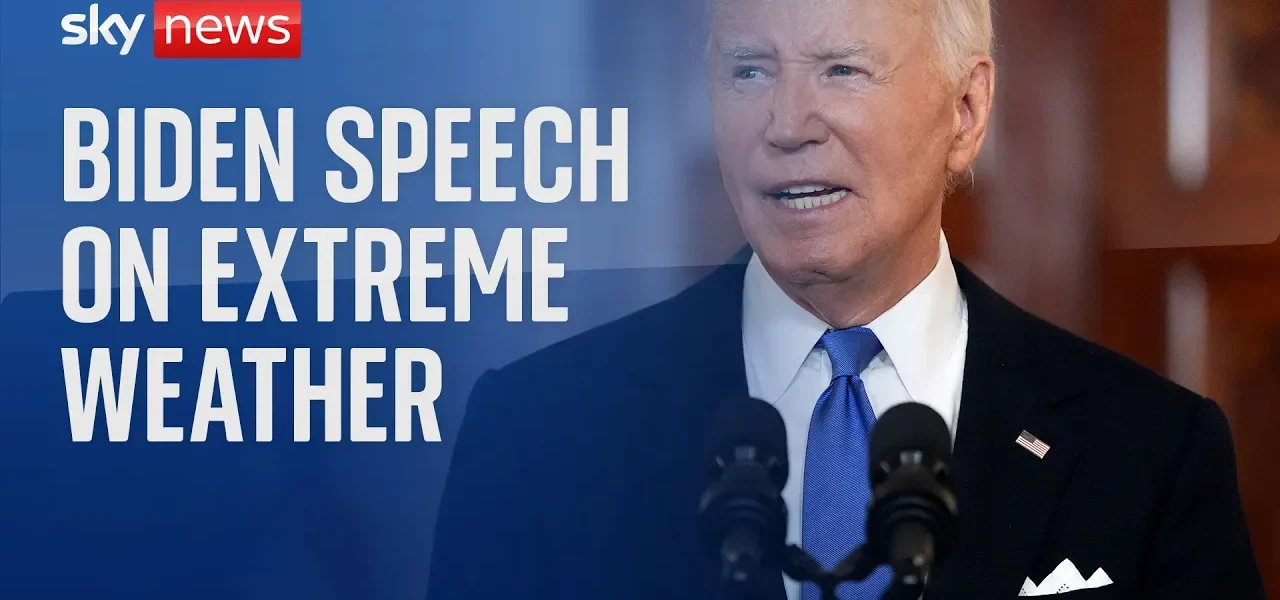President Biden Addresses Extreme Weather Preparedness at the Emergency Operations Center

In a critical address at the Emergency Operations Center (EOC) in Washington D.C., President Joseph Biden highlighted the growing threats posed by extreme weather and climate change. With the support of federal initiatives, the administration aims to bolster the nation’s infrastructure and enhance emergency responsiveness to safeguard communities across America.
Introduction
In recent years, the United States has faced increasingly severe weather conditions, driven largely by climate change. President Biden’s visit to the Emergency Operations Center underscored the urgency of addressing these challenges through robust federal action. The EOC, a state-of-the-art facility opened with federal funding, has already been activated numerous times to respond to emergencies like heatwaves and natural disasters. This article delves into the key points of President Biden’s address, the implications for infrastructure resilience, and the administration’s ongoing efforts to combat climate change.
The Importance of the Emergency Operations Center
The Emergency Operations Center (EOC) plays a vital role in managing responses to extreme weather events. It serves as a central hub for coordination among local, state, and federal agencies, ensuring timely and effective action during crises. During his visit, President Biden acknowledged the critical work done by the EOC team, noting that they have already activated the center more than two dozen times since its opening in 2023.
Historical Context
The EOC was funded by a $7.5 million grant from the Department of Homeland Security, a testament to the federal government’s commitment to enhancing emergency preparedness. As climate-related events become more frequent and severe, the EOC’s role will only grow in importance.
Recent Activations
- Response to Canadian wildfires affecting local air quality.
- Activation during a severe storm that caused significant damage in D.C.
- Declaration of 34 heat emergencies in the past year alone.
Addressing Extreme Weather Challenges
President Biden highlighted the alarming statistics regarding extreme heat, which is now recognized as the leading weather-related killer in the United States. The impacts of rising temperatures disproportionately affect vulnerable communities and contribute to significant economic losses.
Current Weather Trends
- Record-breaking temperatures across the country.
- Increased frequency of heatwaves and severe storms.
- Potential for economic damage exceeding $90 billion from weather-related disasters in the previous year.
Impacts on Communities
Extreme weather events not only threaten lives but also disrupt local economies and infrastructure. Vulnerable populations, including the elderly and low-income families, face heightened risks during these crises.
Federal Actions to Combat Climate Change
In response to these challenges, President Biden announced several key initiatives aimed at enhancing the nation’s resilience to extreme weather.
New Safety Standards
The Department of Labor is set to introduce the first federal safety standards for excessive heat in the workplace, which will include:
- Establishing response plans for heat-related illnesses.
- Providing training for employees and supervisors.
- Implementing mandatory rest breaks and access to shade and water.
Funding for Resilience Projects
Nearly $1 billion in grants will be allocated for over 650 projects designed to help communities better prepare for natural disasters. This funding is part of a broader initiative to deliver 40% of benefits from climate investments to underserved communities.
EPA Initiatives
The Environmental Protection Agency will release reports detailing the ongoing impacts of climate change on public health and the environment, helping communities to better prepare and respond to crises.
Conclusion
President Biden’s address at the Emergency Operations Center served as a clarion call for action against the escalating threats of extreme weather and climate change. With a commitment to infrastructure resilience and community support, the administration aims to protect vulnerable populations and strengthen the nation’s response to natural disasters. As we face these challenges together, it is vital for communities to stay informed and prepared. For more information on resources available during extreme weather conditions, visit heat.gov and follow local guidance.
“`




